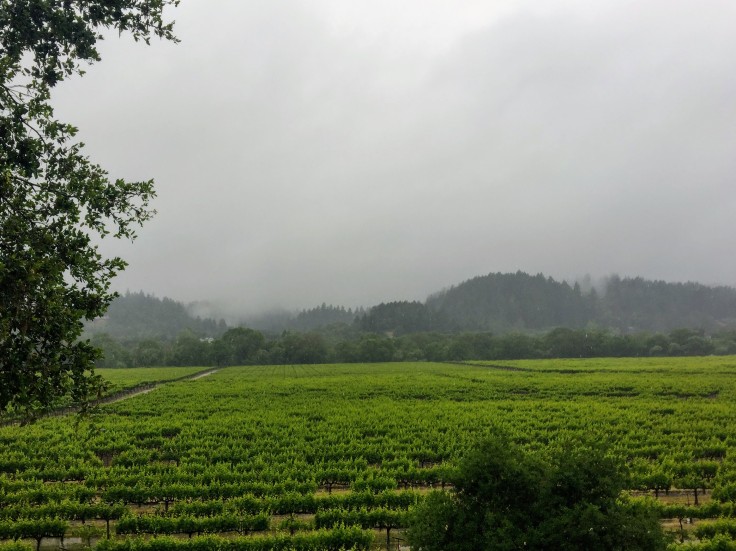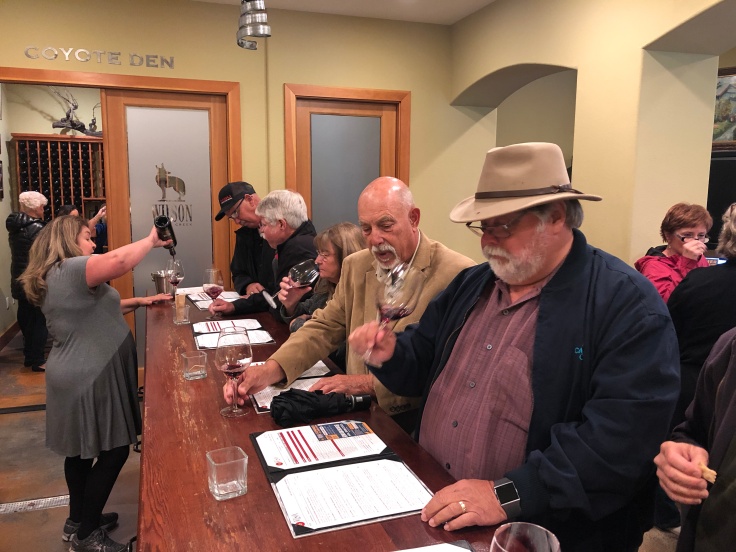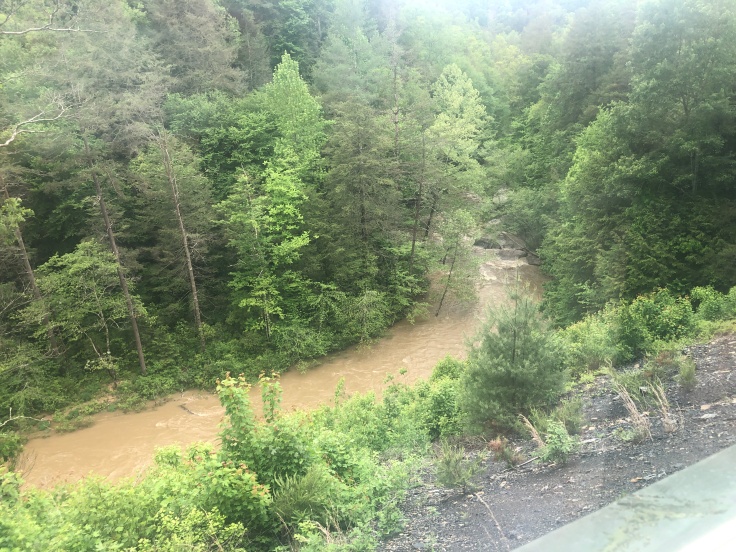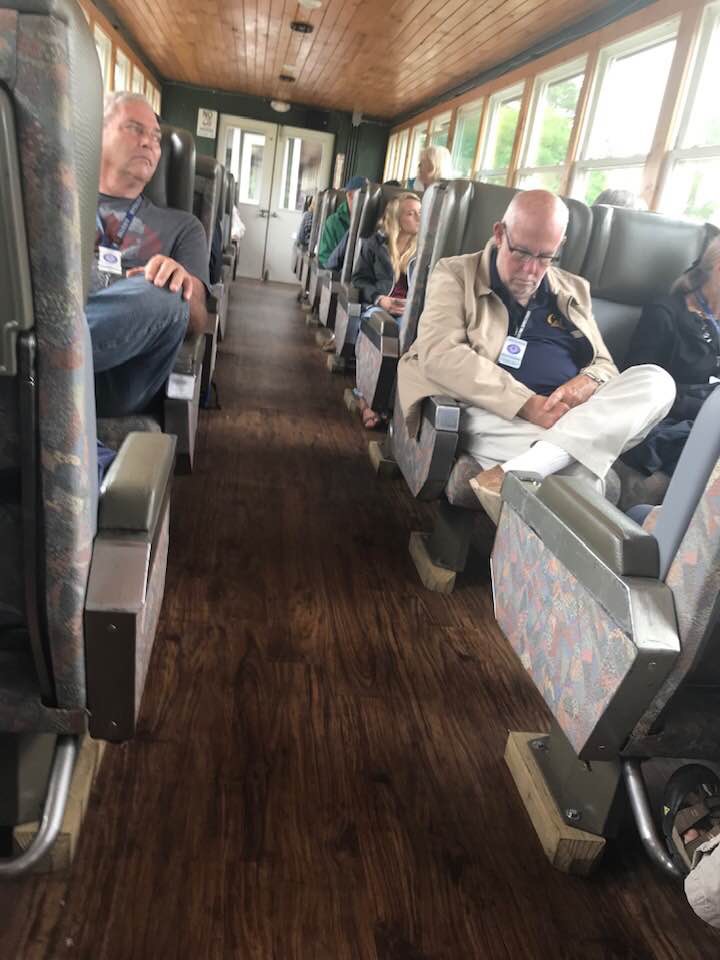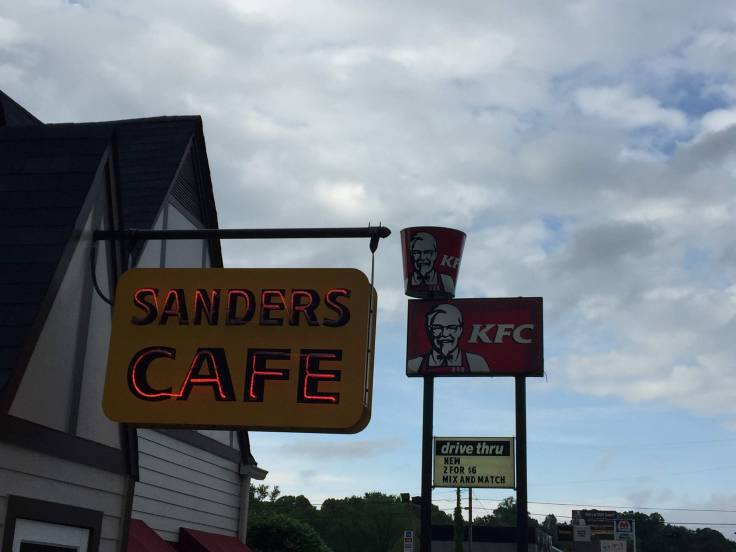Yesterday we flew back from Redlands to Nashville. We Ubered back to the Villa in Franklin, KY… It was still there…


Our host invited us to his patio where we shared a few bottles of wine…

This morning we waved, “goodbye” and headed south, towards Nashville. We were going to visit Hermitage, the plantation home of Andrew Jackson, the 7th president of the US… The house was built in the early 19th century, like most plantation houses… It is set in 1,100 acres of “park” land, although in Jackson’s day it was a working plantation, earning Jackson his money via cotton through the the hard work of slaves…








As lovely as it is, the mansion was originally built as a simple house, but it burned down in its early years. The house was rebuilt, but after Jackson became president, he had the house enlarged again and remodeled to its current Greek Revival form… thus these awkward “false fronts”…



As was common at the time, economy often was a big feature; these “stone” columns are actually wood, with a faux-finish added to resemble stone. At least they now have internal ventilation to reduce the likelihood of rot, mold, and wood deterioration…

The trim around the doors was also wood with faux-finish…


At the rear of the house the columns are allowed to look like wood…

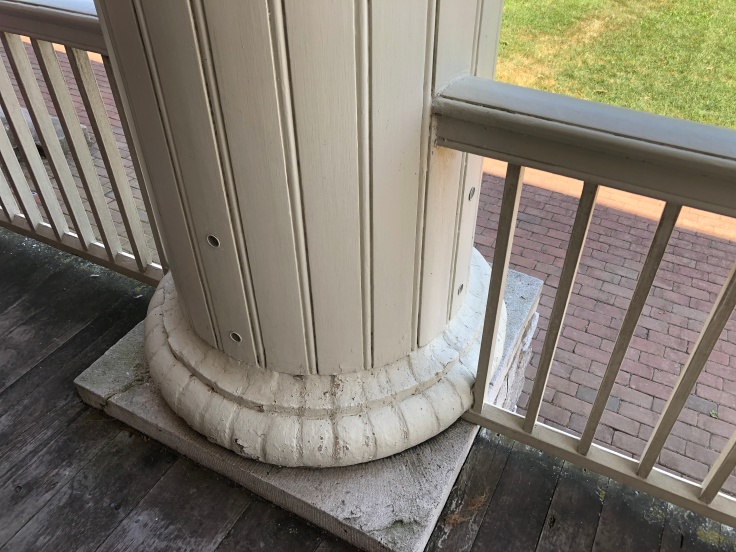
Hermitage had an interesting museum telling of the life and times of Andrew Jackson… Some interesting facts, firsts, and lasts…
- He fought in the Revolutionary War (as a messenger, at age 13). He was captured and spent time as a Prisoner of War (the only President to have been a POW…)
- He fought in the War of 1812, and is known for his leadership in the Battle of New Orleans, the final defeat for the British in the war…
- He was an orphan with no surviving siblings by the age of 20…
- Both South Carolina and North Carolina claim his birthplace location is in their state…
- He was the first Representative to Congress from Tennessee; he also was a Senator from Tennessee… He also became a Tennessee Supreme Court Judge…
- He was the last President to have personally known all prior Presidents (Washington, J. Adams, Jefferson, Madison, Monroe, and J.Q. Adams)…
- He was the first President who was not from the American aristocracy; all prior Presidents were born either in Virginia or Massachusetts…
- He was the only President whose parents were born outside the country…
- His wife was a bigamist and adulteress; she died just before Jackson’s inauguration; he never remarried…
- He adopted two Native American children and raised them as his own; he also raised at least 8 foster children. He was also the leader of the harsh and brutal removal and relocation of the Native Americans that lead to the “trail of tears”.
- He was an unapologetic slave holder, and he did not free any of his slaves; all records do show that he treated his slaves relatively “fairly”, he kept slave families together, and he allowed them to cultivate their own gardens for their own use…
- Jackson faced the threat of secession by South Carolina over “nullification”; South Carolina opposed the “Tariff of Abominations” and refused to comply; the crisis was defused when the tariff was amended, and Jackson threatened the use of military force if South Carolina attempted to secede. (You would have thought that South Carolina would have learned its lesson that nullification and secession was frowned upon by the Union…)
- Jackson became the only president to completely pay off the national debt, in 1835…
- In 1806 Jackson fought a duel with Charles Dickinson, whom he shot and killed..
The house tour was very interesting. It is a fairly typical plantation “big house” in that it has a central hall with two rooms on either side, on both floors. One unique feature of this house is that two ground floor rooms were bedrooms and there is a secondary hallway between the bedrooms leading from the central hall to a side door. The house was enlarged when Jackson was president to add a large Dining Room on one side and two offices on the side of the bedrooms. A back stair was also added at the side door.
The main central hall has this spectacular wallpaper:




(Have you ever heard me rave about wallpaper???)
We were able to enjoy the balcony at the front of the house, which was a social space for family and guests…


(Hint: That is not the ocean out there…)
We also saw the back porch, which was a work area for the slaves; this nice grassy yard was a dirt yard for pigs and chickens in Jackson’s day…


An interesting note about the tours at Hermitage…

“Uncle” Alfred was a slave, who lived almost his entire life at Hermitage. This is his cabin:

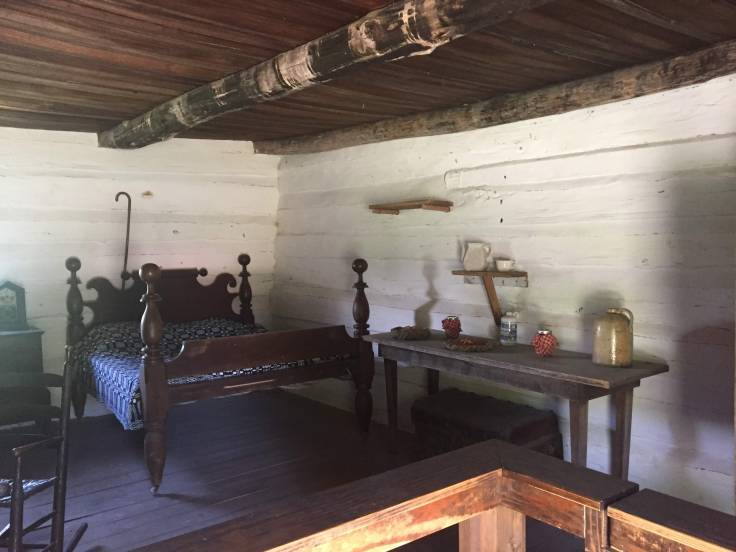

Alfred was in charge of horses, one of Jackson’s interests. (He raised race horses, even while President)… As such, Alfred held a place of honor among the slaves, and he is the only slave buried in the family graveyard, which contains the remains of four generations of Jacksons…
After Jackson’s death in 1845 his adopted son, Andrew Jackson, Jr., let the plantation become dilapidated. In 1858 he sold the plantation to the Tennessee government to repay debts. The family was allowed to remain living in the big house.
In 1889 the Ladies’ Hermitage Society was formed to maintain Hermitage and to offer tours. Some of the 3rd and 4th generations of the Jacksons were still living upstairs when tours of the downstairs began being offered. Who was one of the first tour guides? Alfred, the longtime slave! Alfred lived to the age of 98, dying in 1901; he was a slave during Jackson’s presidency, was emancipated the Civil War, was a guide for tourists curious about this house, and still lived in his former slave cabin…
It was an enjoyable tour, but it was very hot. We were happy to start our drive to Memphis…
We arrived in Memphis about 5:00, really late compared with our normal scheduling… We did find a neat little place for dinner:

Uncle Lou’s was featured on the Food Network, and a version of Uncle Lou’s Fried Chicken is served at Playground, in Santa Ana, CA…
We returned to the Villa, turned on the AC, and turned in early…
And an enjoyable time was had by all…




























